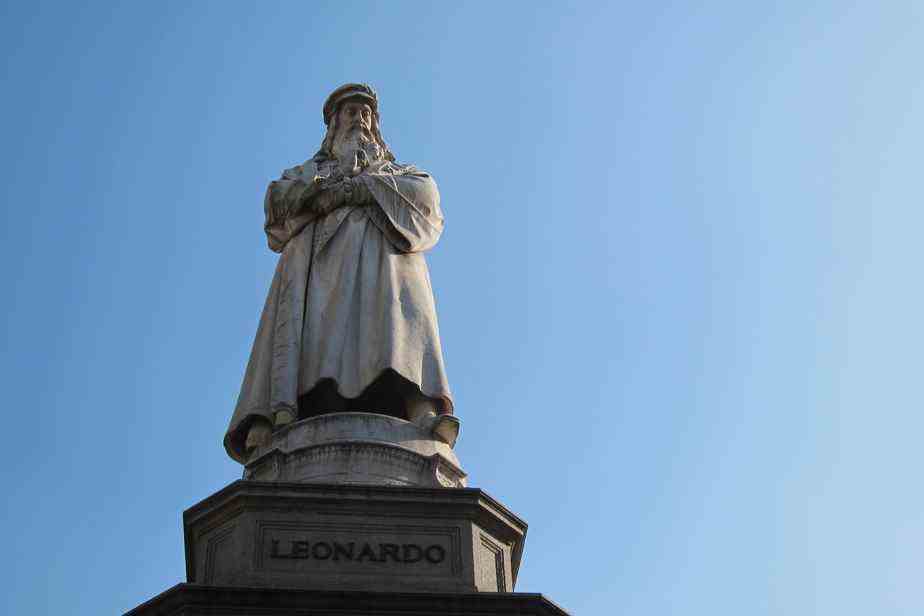The Renaissance master was born in Tuscany and died in Amboise, France. But he spent almost 20 years of his life in Milan. The metropolis of Lombardy still keeps track of it. The proof in six tourist places.
A last supper who deserves

PHOTO STÉPHANIE MORIN, THE PRESS
The Lord’s Supper by Leonardo da Vinci adorns the wall of the former dining room of a cloister.
After Mona Lisa, The Lord’s Supper is without a doubt Leonardo da Vinci’s most famous pictorial work. Painted directly on the walls of the cloister of the Basilica of Santa Maria delle Grazie, it is very fragile, which explains the difficulties experienced by those who want to admire it. Two options are available to travellers: either you book your place three months in advance (with the Cenacolo Vinciano) and you pay $20 to access the former dining room of the cloister where The Lord’s Supper ; or you sign up for one of the many guided tours offered by different companies, which will cost between $50 and $70. Be aware that in either case, you won’t be able to spend more than 15 minutes with the masterpiece. For the one-hour guided tours, you will be entitled to 45 minutes of generic information given on the square next to the cloister. It’s expensive to pay. A word of advice: if you can, buy your tickets in advance.
A different guided tour

PHOTO PROVIDED BY SONDERS AND BEACH
The guided tour of the Quiiky company allows us to discover the painter Salai, presumed lover of Leonardo da Vinci.
The company Quiiky, which specializes in LGBTQ+ tourism, offers a fascinating guided tour that lifts the veil on a seldom-discussed aspect of the painter’s life: his sexual orientation. For the guide Ortu Corrado (and many historians with him), the life of Vinci, to whom neither wife nor children are known, was marked by a burning love for his pupil Gian Giacomo Caprotti, also known as Salai . We also know that Vinci had to flee Florence for a sexual affair (he was accused of sodomy there in 1476). The visit allows you to discover more about this Salai who signed a very Leonardesque canvas entitled Saint Jean Baptist. A visit that sheds a different light on a man over whom great mysteries still hang.
Leonardo, the engineer

PHOTO LORENZA DAVERIO, PROVIDED BY THE MUSEO NAZIONALE DELLA SCIENZA E DELLA TECNOLOGIA
The National Museum of Science and Technology presents many objects and sketches from the fertile brain of Leonardo da Vinci.
Located in Milan, the National Museum of Science and Technology, the most important of its kind in Italy, has several rooms dedicated to the inventions of Leonardo da Vinci. The visit allows you to appreciate the genius of man, who imagined machines for flying, military devices, dyke systems, architectural marvels and a whole panoply of sophisticated gears and pulleys… More than 170 objects, drawings and artefacts are gathered here to tell, in particular, how Leonardo influenced the engineering of his time. It is also the largest permanent exhibition in the world devoted to Leonardo da Vinci.
Leonardo 2.0

PHOTO PROVIDED BY LEONARDO3
In the magnificent Galleria Vittorio Emanuele II, there are several 3D reproductions of machines invented by Leonardo da Vinci.
Another temporary exhibition allows visitors to discover the fertile imagination of the painter, engineer and architect that was Vinci. Located a stone’s throw from the Duomo, in the magnificent Galleria Vittorio Emanuele II, this resolutely technological museum aims above all to be interactive. Here we find several 3D reproductions of machines invented by Leonardo, multimedia stations (especially with digitized paintings, such as Mona Lisa), a reproduction of The Lord’s Supper with what we believe to be the original colors, objects to manipulate… Only problem: the informative signs are in Italian only and you have to use the audio guide (offered in eight languages, including French) to find out any further. It’s a bit tedious. The end date of this exhibition, which has already passed through Toronto, is still unknown.
Leonardo da Vinci’s notebooks

PHOTO TAKEN FROM THE FACEBOOK PAGE OF THE PINACOTECA D’AMBRIOSIANA
The huge Codex Atlanticus sits at the heart of a magnificent library.
It is in Milan, in the Pinacoteca d’Ambrosiana, that the famous Codex Atlanticus, collection of drawings and notes by the master Leonardo. The approximately 1100 sheets were collected in 12 volumes after the death of the latter. The immense work sits at the heart of a library which alone is worth the detour for its magnificence. Pages from Codex are presented in the shelter behind thick glass and are changed at regular intervals so as not to suffer too much from the light. The Pinacoteca also has interesting pictorial works, including the Portrait of a musician signed by Vinci and the Saint Jean Baptist of Salai. At the heart of Raphaël’s huge sketch for The school of Athenswe will also recognize a man who looks like… Leonardo da Vinci!
Vinci, winemaker

PHOTO FROM LA VIGNA DI LEONARDO FACEBOOK PAGE
These vines are the descendants of those received by Leonardo da Vinci in 1498.
A curiosity, but not a must: right next to the Basilica of Santa Maria delle Grazie which houses The Lord’s Supper is the very beautiful House of the Atellani. In his garden, sheltered from the noise of the city, are some carefully maintained vine plants. And for good reason: these vines belonged to Leonardo da Vinci, who received them from the Duke of Milan in 1498. In his will, the painter exiled in France ceded half of this plot of land to his favorite pupil, Salai. The visit with audio guide of the garden and some rooms of the house is offered at the cost of 13 $ (10 euros).
Part of the travel costs for this report were paid for by the Italian Tourism Association for the LGBTQ+ Community (AITGL) and the Italian Tourist Board ENIT, who have no say in this article.
